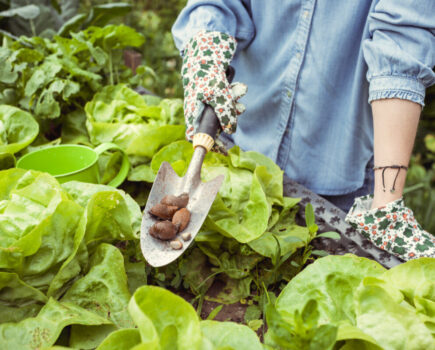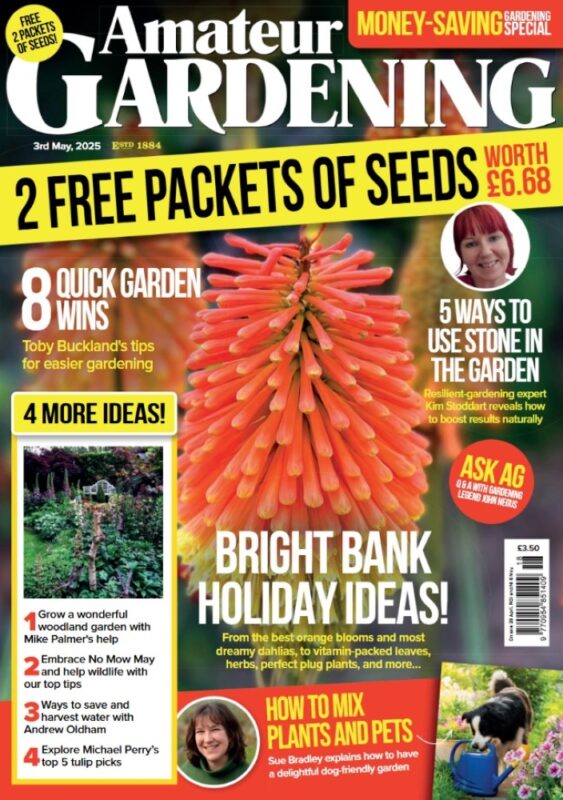Mike Palmer provides us with ideas and inspiration to carry on gardening over the weeks ahead..
It seems like a matter of just a few weeks since British Summer Time ended, and the clocks were put back an hour. I confess to an initial relish of the darker evenings and the excuse to sit down, relax and recover from a season of rushing around in our green spaces. But now I’m beginning to get a bit twitchy.
I’m tired of ‘Strictly I’m a Celebrity Dancing on Ice’, or whatever is offered up for our televisual delectation these days. And, I’m sure, like me, you miss the warm, balmy evenings, watering, feeding, weeding and gardening like an Olympian. I long for my glorious summer garden, filled with fabulous blooms, intoxicating scent, swaying grasses, and pollinators buzzing lazily through the borders. Yet, in the midst of the coldest, darkest days of winter, there are already real signs of hope and expectation all around our gardens if only we look. So if you’re needing a friendly nudge to get you from armchair to great outdoors, I hope I can help you on your way.

- A morning wander
Every morning, without fail, I’m to be found strolling around my ‘estate’. That’s a particularly grand word that’s quite unbefitting my medium sized garden, but it’s what I shout every day to the other half as I head on out. It’s an uplifting and enjoyable experience, even with fat raindrops/cold snow/delightful sunshine (please delete as appropriate) dancing on my face. In winter, wrapped snugly in my well-worn leather hat, woolly scarf and gloves, it gives me a chance to check all is in order, noting the comings and goings of my beloved garden space. And depending upon the vagaries of the British weather, and my schedule for the day, this morning sojourn can take anywhere between ten minutes and an hour.
My wintery wanders are particularly important to me as I seek reassurance of the hope that my slumbering garden is but a façade for the silent but persistent activities both above and below the soil. Our gardens might appear to slow down at this time of the year, but rest assured, there’s plenty going on and some signs are already apparent to expectant gardeners if we get up close.
- Looking for signs of spring
Across our gardens, the first tiny signs of the season-to-come are beginning to show themselves. Trace down to the base of the dark brown, brittle stems of sedums and you’ll find a clutch of perfectly formed, embryonic, leaves. Similarly, the bases of penstemons and many other perennials, including heleniums, echinops and asters harbour juvenile foliage, sitting quietly, waiting patiently for their adolescent growth spurt to begin. It brings the widest smile to my face.

- Check spring flowering bulbs
Pots of spring flowering narcissus, planted but just a few weeks ago are already poking their inquisitive noses into the cold December air. In a matter of weeks late winter will roll into early spring releasing them from their winter torpor, and the yellow, orange and white stars of early spring will have our spirits soaring skywards.
- Check seedlings
In my greenhouse the young foxglove, verbascum and English daisy (Bellis perennis) seedlings are growing away, almost imperceptibly, day by day into robust, garden worthy plants. Unlike the immature rosettes of perennial growth in our gardens, seedlings undercover are totally reliant upon us for watering. Even in the cold, hard days of December, January and February, beautiful, blue sky days come along and it’s on these that I treat my seedlings to a day out. Sat outside luxuriating in the watery sunshine, they soak up a healthy splash of water, before being tucked away again before nightfall.

- Feed the birds
The papery rustle of dried leaf litter in the corner of the garden from a perky blackbird, rootling hungrily for grubs and insects, is a timely reminder to top-up supplies on bird tables and keep birdbaths topped up with water. Our feathered friends are so reliant upon our intervention at this time of year. Fatcakes, kitchen scraps, cheese and seeds will attract an excited squabble of birds into your garden. And whilst you’re out there, topping up supplies, listen out for their chitty-chatty birdsong. A beady-eyed robin is never too far away for me, singing contentedly to itself in the bare branches of a tree overhead.
- Bring the outside in
We often talk about bringing elements of our gardens into our homes, and at this time of year there are some tantalising treasures ready to be popped into a vase to add a floral flourish and perhaps intoxicating scent into our Christmas homes. Just one stem of Winter box, (Sarcococca confusa) or Japanese skimmia (Skimmia japonica) added to a small vase will scent an entire room. Cut down stems of apple-green, red or fiery dogwoods and place them in a tall vase for a stylish Yuletide display. Pots of early flowering dwarf iris (Iris reticulata) or miniature daffs, top-dressed with moss, look great sat on a bright windowsill or make a simply exquisite table centrepiece.

- See the light
On bright, blue, sky days, the sun, set low in the sky, throws an extraordinary, incandescent light across our green spaces, quite unlike the golden rays of summer. The backlit, feathery inflorescences of ornamental grasses, (I had to mention them, didn’t I) and fading perennials are simply breathtaking. Cotton wool clouds, scudding high above throw the garden into bursts of shade and then pools of diffused light.
- Look for signs of overwintering garden mammals and insects
Irrespective of size, our gardens play host to myriad mammals, insects and invertebrates, using the ghostly stems of perennials, the shelter of evergreen shrubs and ground cover plants for their winter hideaways. Look out for fat toads, ladybirds and hedgehogs. A light hand on the tiller is the best way forward if you’re removing some of the debris or leaf litter from your borders so as not to disturb them from their silent slumbers.

Find more tips, advice and articles like this at the Amateur Gardening website. Subscribe to Amateur Gardening magazine now.





